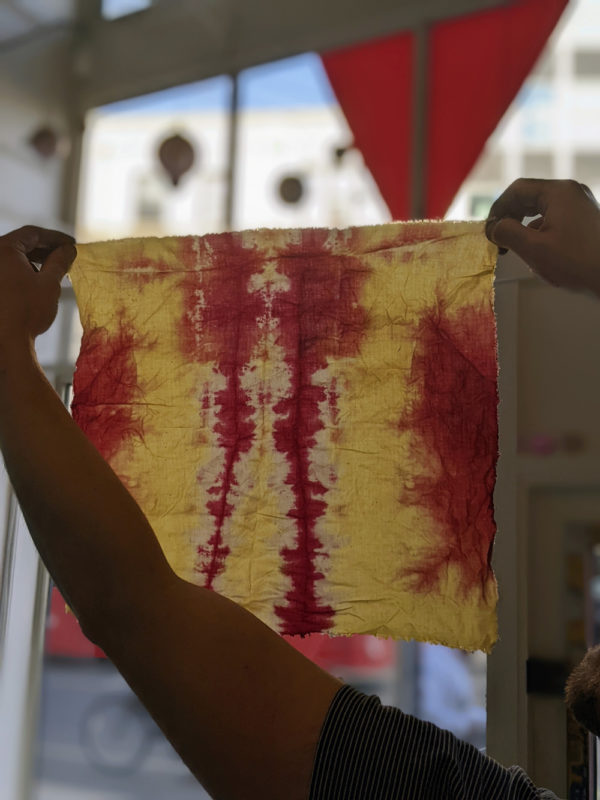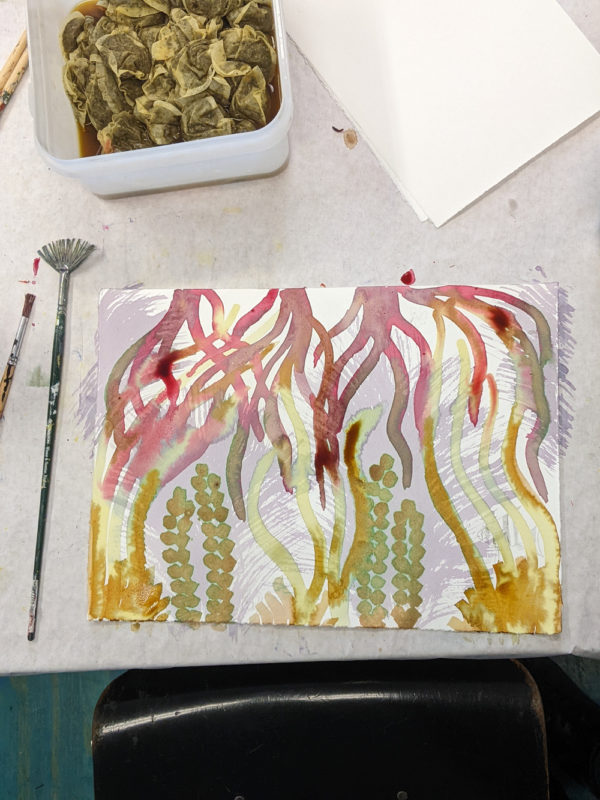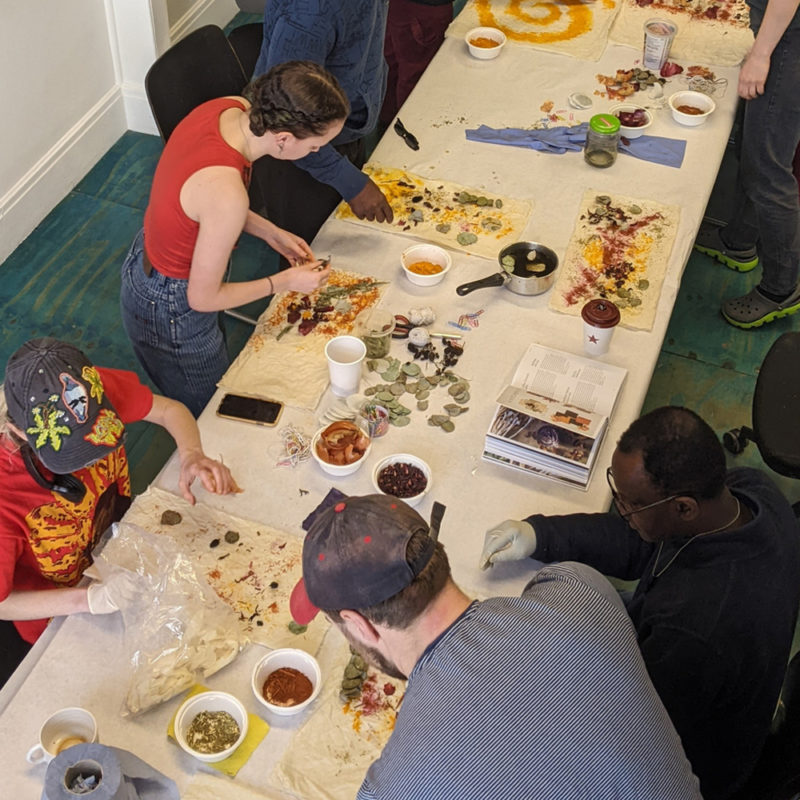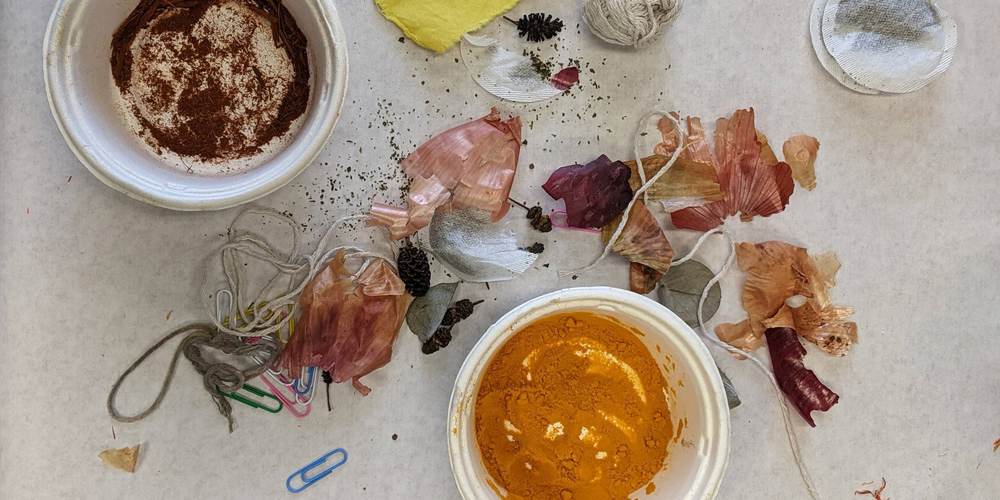
About
We started the day with bundle dyeing – a dye process using plant material placed on the pre-treated fabric then rolled, tied and steamed. We used hibiscus flowers, onion skins, safflower, turmeric, logwood, weld and eucalyptus leaves & alder cones dipped in iron water. Then we made two dye pots for some tie dye and shibori experiments.
The first dye pot was logwood which gave a rich blue/purple with fabric which had been treated with alum, and a pinkier purple with fabric treated with soya milk. The second dye pot was safflower with avocado stones & skins which created a lovely yellow.
In the afternoon we worked with natural pigments on paper, using colour from turmeric, red cabbage, beetroot, green tea and pine cone ink. Layering the pigments gave different colours – we discovered that the red cabbage and pine cone created an amazing green.
We had a lovely day and it was wonderful to see everyone’s creations – my favourite thing about the dye process is that you don’t know what it’s going to look like until you unwrap the tied and folded bundles. I’m really looking forward to seeing how the fabrics are used by the students in their upcoming workshops with YMC.
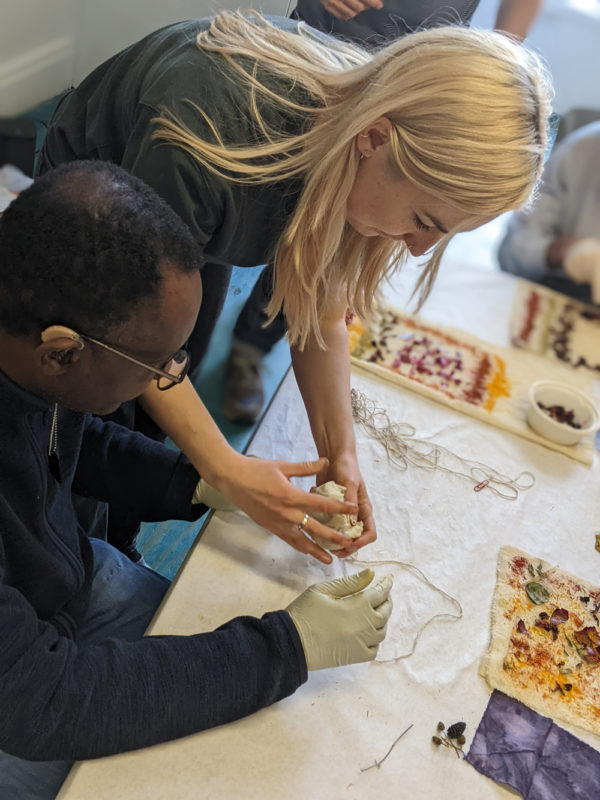
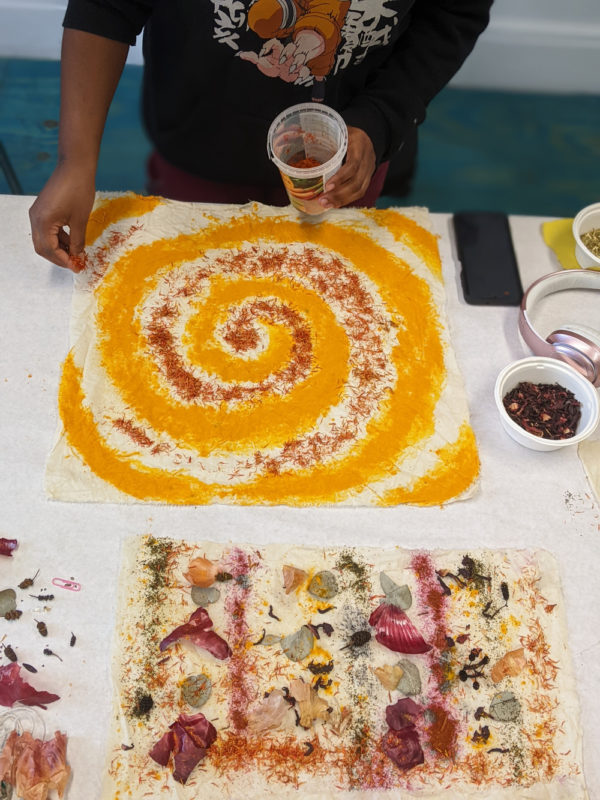

Bryony:
“My favourite thing about the dye process is that you don’t know what it’s going to look like until you unwrap the tied and folded bundles“
About Bryony James
